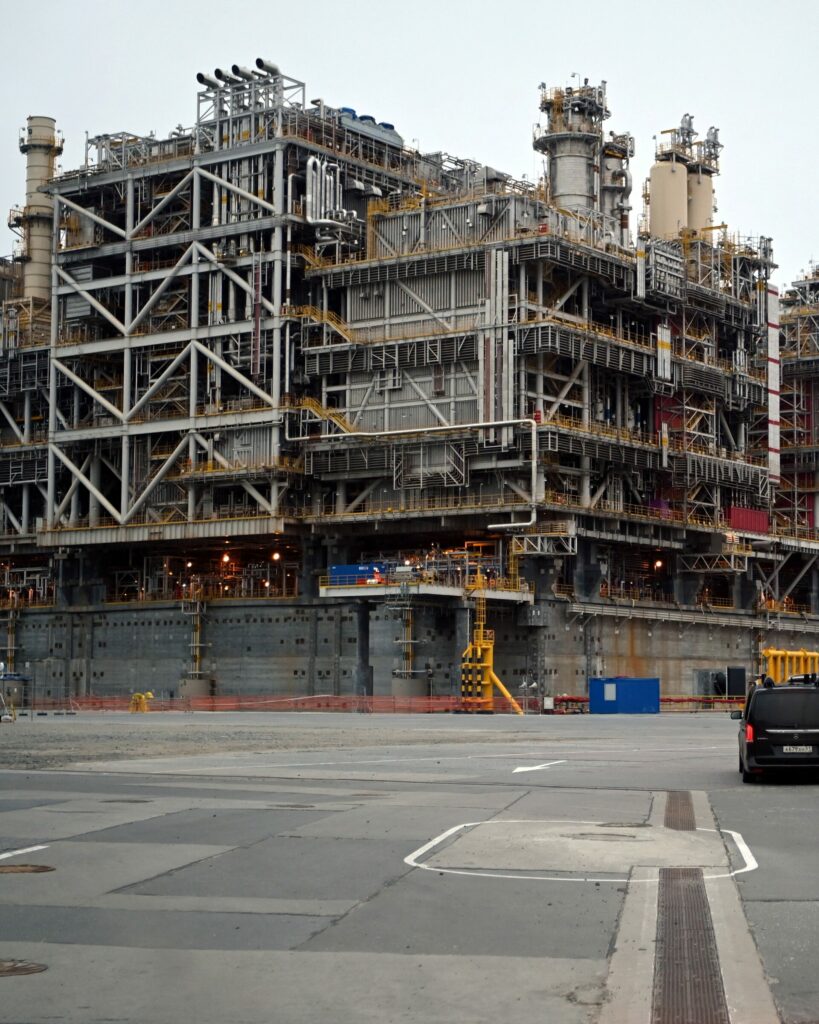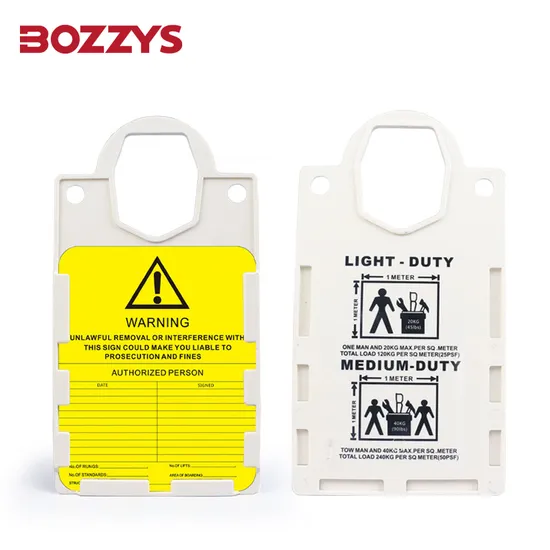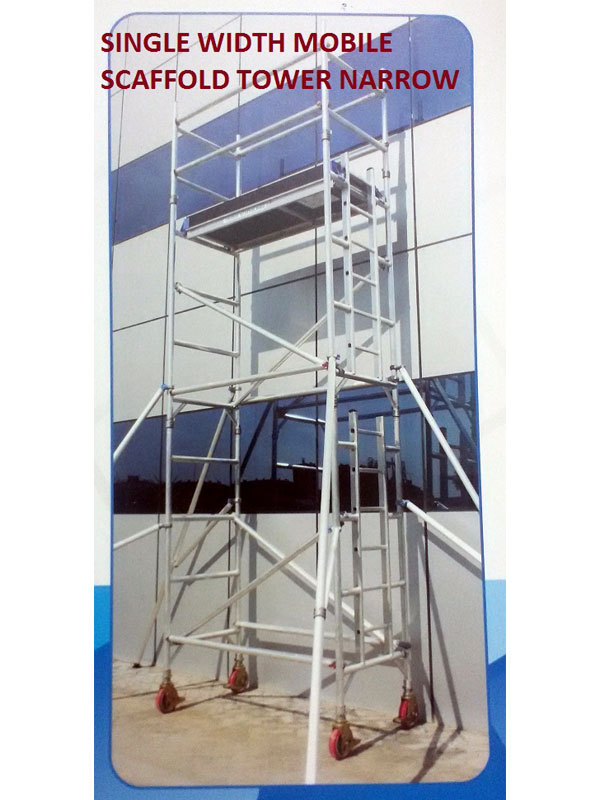Crafting scaffolding in construction requires skill and precision. In Saudi Arabia, this task holds unique challenges.
Scaffolding is essential for safety and efficiency on construction sites. It supports workers as they build, repair, or maintain structures. In Saudi Arabia, the construction industry is booming, with skyscrapers and mega-projects rising rapidly. Each project demands reliable scaffolding to ensure worker safety and project success.
The process of crafting scaffolding involves understanding materials, local regulations, and site-specific needs. It is crucial to use appropriate materials that withstand the harsh climate. The right techniques ensure stability and safety for workers. Additionally, adhering to Saudi regulations is vital for compliance and safety. This guide will explore the steps and considerations necessary to craft scaffolding effectively in Saudi Arabia.

Credit: www.nirman.vc
Introduction To Scaffolding
Learn how to craft scaffolding in construction in Saudi Arabia. This guide covers essential steps and safety measures. Enhance your building projects with effective scaffolding techniques.
### Introduction to Scaffolding Scaffolding is an essential part of the construction industry, especially in Saudi Arabia’s rapidly growing landscape. It’s a temporary structure used to support workers and materials during the construction, maintenance, or repair of buildings and other structures. Understanding scaffolding can significantly improve the safety and efficiency of a construction project. Imagine you’re overseeing a project in Riyadh. The towering skyscrapers demand precision and safety at every step. Scaffolding provides the necessary platform for workers to access different heights, ensuring the project progresses smoothly. But why exactly is scaffolding so important? ###Importance Of Scaffolding
Scaffolding plays a critical role in ensuring the safety of workers. It provides a stable and secure platform, reducing the risk of accidents. Without it, reaching high or awkward places would be hazardous. It also enhances productivity. Workers can move around easily and carry their tools and materials efficiently. This convenience translates into faster completion times and better-quality work. Scaffolding is not just about safety and speed. It represents a structured approach to construction that aligns with Saudi Arabia’s ambitious building projects. Are you considering the right scaffolding for your next project? ###Types Of Scaffolding
There are several types of scaffolding, each suited to different construction needs. Tube and coupler scaffolding is versatile and can be assembled in various configurations. This flexibility makes it a favorite in complex projects. Suspended scaffolding is perfect for tall buildings. It hangs from the roof and can be adjusted up or down. This is particularly useful in Saudi Arabia’s high-rise constructions. System scaffolding is pre-engineered and easy to assemble. It’s commonly used for its efficiency and reliability in both small and large projects. Which type fits your project’s unique demands? Choosing the right scaffolding involves understanding these types and their applications. It ensures your construction process is not only safe but also efficient and aligned with industry standards.
Credit: saudiscaffoldingsolutions.com
Regulations And Standards
Crafting scaffolding in Saudi Arabia involves adhering to safety regulations and standards. These guidelines ensure the stability and security of structures. Compliance helps protect workers and supports efficient construction practices.
Crafting scaffolding in construction is not just about assembling metal tubes and platforms. It’s a precise task governed by a set of stringent regulations and standards, especially in Saudi Arabia. Compliance with these rules ensures not only the safety of workers but also the integrity of the construction project. Understanding these regulations and standards can be the difference between a successful project and potential hazards. Let’s dive into the specifics of the Saudi Building Codes and International Standards to see how they guide your scaffolding efforts.Saudi Building Codes
Saudi Arabia has specific building codes that you must adhere to when setting up scaffolding. These codes are designed to ensure safety and efficiency in construction projects across the country. The Saudi Building Code (SBC) outlines the requirements for scaffold design, materials, and load capacity. To stay compliant, familiarize yourself with the SBC’s guidelines on permissible materials and structural requirements. For instance, using approved materials that can withstand the harsh Saudi climate is crucial. Ensure your scaffolding can handle the expected load to prevent accidents.International Standards
Alongside local regulations, international standards play a crucial role in crafting scaffolding. The Occupational Safety and Health Administration (OSHA) and the International Organization for Standardization (ISO) provide valuable guidelines. Incorporating these standards ensures your scaffolding meets global safety benchmarks. For example, OSHA’s directives on guardrails and fall protection help in minimizing on-site risks. By aligning with ISO standards, you can enhance the credibility and safety of your projects. Have you ever faced a challenge in adhering to these standards? It can be overwhelming, but breaking down each requirement into manageable steps can simplify the process. Collaborating with experienced professionals can also offer practical insights and solutions. In the ever-evolving landscape of construction, keeping updated with both local and international standards is your ticket to a successful and safe construction site. How do you ensure your scaffolding meets these rigorous standards?Materials For Scaffolding
Scaffolding is essential in construction projects. It provides a safe platform for workers. Choosing the right materials for scaffolding is crucial. The material affects safety, durability, and cost. In Saudi Arabia, various materials are used for scaffolding. Each material has its own benefits and drawbacks. This section will explore three common materials: steel, aluminum, and wood.
Steel Scaffolding
Steel scaffolding is very strong and durable. It can support heavy weights. This makes it ideal for large projects. Steel scaffolding is also resistant to fire. This adds an extra layer of safety. However, steel is heavy. It requires more effort to assemble and dismantle. Its weight also increases transportation costs. Despite this, its strength and durability make it a popular choice.
Aluminum Scaffolding
Aluminum scaffolding is lightweight. It is easy to move and assemble. This saves time and labor costs. Aluminum is also resistant to rust. This makes it suitable for outdoor use. It is not as strong as steel, though. It may not be the best choice for very heavy loads. For many projects, aluminum is a practical option.
Wooden Scaffolding
Wooden scaffolding is the oldest type of scaffolding. It is still used in some places. Wood is easy to find and work with. It is also cheaper than steel and aluminum. However, wood is not as strong. It can also rot or catch fire. This makes it less safe. Wooden scaffolding is best for small, short-term projects.
Designing Scaffolding Structures
Designing scaffolding structures in Saudi Arabia requires precision and expertise. These structures support workers and materials at significant heights. Safety and efficiency are critical. The design process involves understanding load capacity, structural stability, and environmental factors. Proper design ensures the safety and success of construction projects.
Load Calculations
Accurate load calculations are essential for scaffolding design. They determine how much weight the structure can safely support. Engineers assess the total weight of workers, tools, and materials. They also consider potential external forces like wind. This helps prevent structural failure. Using incorrect load calculations can lead to accidents and delays.
Structural Stability
Structural stability is crucial for scaffolding safety. Engineers must ensure scaffolding remains secure during use. They analyze factors like base support and anchor points. Adjustments may be needed based on ground conditions. Stability is vital in Saudi Arabia’s diverse environments. Careful planning reduces the risk of collapse.
Safety Measures
Ensuring safety in scaffolding construction is vital. In Saudi Arabia, safety protects workers and prevents accidents. Implementing robust safety measures is crucial. Proper safety practices reduce risks and enhance project efficiency.
Worker Training
Training is the first step in scaffolding safety. Workers must know how to use scaffolds correctly. Training sessions should be regular and thorough. They should cover scaffold assembly and use. Understanding weight limits is also essential.
Training should include emergency procedures. Workers should know what to do in case of accidents. This knowledge saves lives. Regular evaluations test their understanding. This ensures workers are prepared and informed.
Safety Equipment
Safety equipment protects workers from injuries. Helmets are a must for everyone on site. They guard against falling objects. Safety harnesses are also important. They prevent falls from heights.
Proper footwear is essential for stability. Workers should wear shoes with non-slip soles. Gloves protect hands during scaffold assembly. Eye protection shields against debris. These items are crucial for worker safety.
Installation Techniques
Crafting scaffolding in Saudi Arabia requires precise techniques. Secure assembly ensures worker safety and structural stability. Proper alignment of frames and platforms is vital for efficient construction.
Crafting scaffolding in construction, especially in Saudi Arabia, requires precision and adherence to robust safety standards. Installation techniques are the backbone of this process, ensuring the structure is safe and reliable. Whether you’re a seasoned professional or new to the field, understanding the nuances of installation can greatly impact the success of your project. Let’s delve into the essential components of installation techniques.Foundation Preparation
The journey starts with preparing a solid foundation. Without it, even the most meticulously crafted scaffolding won’t stand firm. You must ensure the ground is level and compacted to withstand the weight of the structure. Consider your local soil conditions. In Saudi Arabia, sandy soils are common, demanding extra attention to foundation stability. Using base plates and sole boards can distribute the load evenly, preventing any sagging or shifting. Pay attention to drainage. Water pooling around the base can undermine the foundation. Proper drainage channels should be in place to keep the area dry and secure.Assembly Process
Once the foundation is set, the assembly process begins. This stage requires a systematic approach, ensuring every component fits perfectly. Start by organizing all parts and tools. This step saves time and reduces errors. It’s like preparing ingredients before cooking; it makes the process smoother and more efficient. Follow the manufacturer’s instructions to the letter. Each scaffolding system has its unique assembly method. Deviating from the guide can compromise safety and integrity. Engage your team actively. Scaffold assembly isn’t a one-person job. Each member has a role, and clear communication is key to success. Trust in your team’s abilities and encourage questions if uncertainties arise. Remember, scaffolding is not just about assembling metal and planks. It’s about creating a secure platform for workers, and every step in the process matters. What unique challenges have you faced while installing scaffolding? How did you overcome them? Your experiences could shed light on new solutions for others in the field.Maintenance And Inspection
Regular inspection and maintenance of scaffolding in Saudi Arabia ensure safety and reliability in construction projects. Proper checks prevent accidents and comply with regulations.
Maintaining and inspecting scaffolding in construction is crucial, especially in Saudi Arabia where extreme weather conditions can impact safety and durability. Regular maintenance ensures the structure remains safe and reliable. Inspection helps identify potential issues before they escalate into serious problems. So, how can you ensure your scaffolding is always in top-notch condition?Routine Checks
Regular inspections are key to scaffolding safety. Schedule routine checks before and after every use. Look for signs of wear and tear, such as rust or loose fittings. A friend who oversees construction projects once shared how routine checks saved his team from a potential accident. A minor crack was found in a crucial support beam, which was promptly replaced. This simple step can prevent costly repairs and ensure the safety of your workers. Make it a habit to document each inspection. This creates a record that can be invaluable for future reference or audits. Are you keeping track of your checks?Repair Procedures
When issues are found, prompt repairs are essential. Start by assessing the severity of the problem. Minor issues might only need tightening or cleaning, while more significant damage could require replacing parts. During a project in Riyadh, our team discovered a severely corroded joint. We immediately replaced it, preventing what could have been a major safety hazard. Quick action is crucial in maintaining the integrity of your scaffolding. Always ensure repairs are done by qualified personnel. Improper fixes can compromise the entire structure. Are your repair processes up to standard? Incorporating these practices into your maintenance routine can extend the life of your scaffolding and enhance safety. Engaging with your team in regular checks and swift repairs builds a culture of safety and responsibility. How are you ensuring your scaffolding remains safe and secure?
Credit: thearabweekly.com
Case Studies In Saudi Arabia
Crafting scaffolding in Saudi Arabia involves following strict safety standards. Expert teams ensure sturdy structures for construction projects. Proper materials and techniques are vital for worker safety and project success.
Crafting scaffolding in construction requires precision, safety, and a keen understanding of the local environment. In Saudi Arabia, this task takes on additional significance due to the unique architectural demands and climatic conditions. Case studies from the region provide valuable insights into successful scaffolding projects, offering lessons learned that can guide future endeavors.Successful Projects
One standout project is the King Abdullah Financial District in Riyadh. This mega-development required intricate scaffolding to support the construction of towering skyscrapers. Engineers meticulously planned every detail, ensuring scaffolding could withstand extreme temperatures and sandstorms. Another remarkable example is the Jeddah Tower, set to be the tallest building in the world. The scaffolding used here was designed to handle unprecedented heights and complex geometries. These projects demonstrate the importance of tailored scaffolding solutions that address specific environmental and architectural challenges.Lessons Learned
Safety is paramount. In Saudi Arabia, adhering to strict safety protocols proved essential in avoiding accidents. Regular inspections and maintenance of scaffolding were pivotal in ensuring worker safety. Collaboration is another key takeaway. Successful projects relied on close coordination between architects, engineers, and construction teams. This collaboration facilitated the creation of scaffolding systems that met the unique demands of each project. Have you considered how local climate influences scaffolding design? The harsh Saudi Arabian climate necessitates materials that can withstand high temperatures and sand abrasion. Choosing the right materials and design can make or break a project. Reflecting on these case studies, what steps can you take to optimize scaffolding in your own projects? The answers lie in careful planning, robust safety measures, and effective teamwork.Future Trends
Crafting scaffolding in Saudi Arabia involves using modern techniques and materials. Emphasizing safety and efficiency, these methods ensure reliable support for construction projects.
Crafting scaffolding in construction is a dynamic field, especially in a rapidly developing country like Saudi Arabia. The future holds exciting possibilities that are reshaping how scaffolding is designed and used. From embracing cutting-edge technology to prioritizing sustainability, let’s dive into what the future trends in scaffolding construction look like.Technological Innovations
Technology is transforming scaffolding construction in Saudi Arabia. Imagine using drones to inspect scaffolding structures for safety and precision. This not only saves time but also enhances safety by reducing the need for human inspections in risky areas. 3D printing is another game-changer. This technology allows for custom scaffolding components to be created quickly and efficiently. It reduces waste and ensures parts fit perfectly, promoting both safety and sustainability. Consider the role of virtual reality. Virtual reality training can prepare workers to assemble scaffolding without stepping on a real construction site. This boosts confidence and reduces on-site mistakes, making projects safer and more efficient.Sustainability Practices
Sustainability in scaffolding is no longer just a choice—it’s a necessity. Opting for recyclable materials in scaffolding can significantly reduce waste. Steel and aluminum, for instance, are durable and recyclable, making them ideal choices. Energy efficiency is another pillar of sustainability. Using solar-powered lighting on scaffolding sites reduces the carbon footprint and cuts energy costs. It’s a small change with a big impact on the environment. What about reusability? Modular scaffolding systems can be reused across different projects. This not only saves resources but also reduces costs, offering a practical solution for companies looking to go green. These future trends in scaffolding construction are not just about innovation—they’re about making construction safer, more efficient, and more sustainable. As you consider your next project, think about how these trends could improve your work. What changes will you make to stay ahead?Frequently Asked Questions
How Do You Make Scaffolding In Construction?
Scaffolding in construction involves assembling a temporary structure using metal pipes or tubes. Securely connect these with couplers. Ensure stability with base plates and braces. Install platforms for workers to stand on. Always follow safety regulations and guidelines for proper setup and use.
What Is The Salary Of Scaffolding Engineer In Saudi Arabia?
Scaffolding engineers in Saudi Arabia earn between $2,000 to $5,000 monthly, depending on experience and qualifications. Salaries can vary based on the employer and location.
How Do I Craft Scaffolding?
To craft scaffolding, gather six bamboo and one string. Arrange three bamboo in the bottom row, one in the middle, and two more in the top corners. Place the string in the center. This arrangement forms the scaffolding recipe in Minecraft.
How Many Types Of Scaffolding Are There In Construction?
There are several types of scaffolding in construction. Common types include: single, double, cantilever, suspended, trestle, and steel scaffolding. Each type serves specific purposes, ensuring worker safety and efficiency. Proper selection depends on the project requirements and site conditions. Always prioritize safety when choosing scaffolding for construction projects.
Conclusion
Crafting scaffolding in Saudi Arabia requires attention to detail and safety. Understanding the climate and regulations makes construction smoother. Using quality materials ensures durability and security. Training workers effectively minimizes risks and boosts efficiency. Regular inspections help maintain standards and prevent mishaps.
Choosing the right design suits the project’s needs and enhances productivity. Listening to local experts can provide valuable insights. This guide helps in building safe and reliable scaffolding. Ensuring every step aligns with local norms guarantees successful construction projects. Keep these tips in mind for scaffolding that stands strong.


